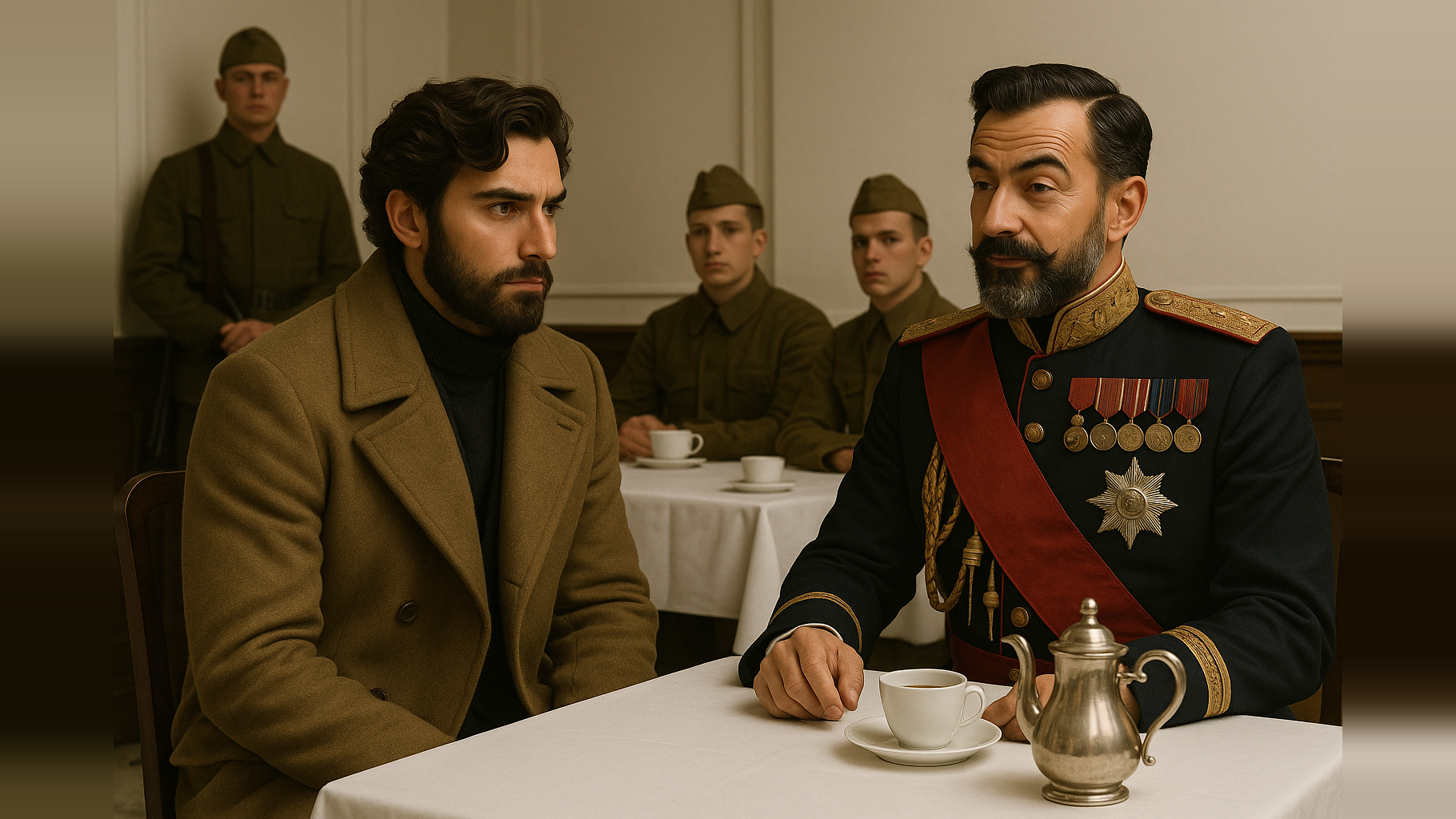
The Characters
In a real movie, you recognize the same character from scene to scene because the character is played by the same actor. In a novel, you recognize the same character from page to page because the character has the same name (what the character looks like is up to you). But in an iMovie of rendered images, there are no actors or names. Generative AI renderers are inherently non-deterministic, so if you give one the same description of a character twice, you will likely get different looking people each time. If you specify a real-world actor, you will consistently get the same identity from scene to scene, expression to expression, because the AI has been trained on many public photos of that actor. Since I am inventing the Ilya and Katerinya identities, I could only vaguely approximate this.
I arranged for all other characters to appear in at most one scene each, so there would be no scene-to-scene identity issues. I created the Ilya and Katerinya identities by “tweening” the photographs of several real people so that the resulting characters don’t look enough like any of the contributing identities to be recognized. These were rendered at very high resolution, and then the AI was successively asked to render the same image with multiple different expressions and camera angles. This was a long process because I had to keep rejecting images that weren’t a close-enough likeness to be credible. This resulted in a composite panel of high-res headshots for both Ilya and Katerinya that would be fed as input to the renderer in each scene in which they were to appear.
I was surprised by how much latent body information is included in a face. The two contributing real identities for Ilya, for instance, were 5’ 7” and 6’ 5” in the real world. When I independently described the tweened character’s height as closer to 5’ 7”, he ended up looking more like the 5’ 7” contributor, and when the character was described as 6’ 5”, he ended up looking more like the taller contributor. So Ilya ended up being 6’ 2” to strike an identity balance between the two contributing identities.
Ilya’s identity turned out to be very robust. He was almost always recognizable as the same character from scene to scene, even after some identity drift due to re-rendering in the same session. Katerinya’s identity, on the other hand, was very fragile. Only about 1 in 5 renderings of her look like the same character. Ilya’s stability benefitted from his characteristic hairstyle, prominent eyebrows, deep-set eyes, and beard – all dark. So subtle differences in the cheeks, nose and jawline are not so salient because the overall facial image is dominated by the dark hair features. Katerinya has no such cover, so small variations in facial structure are noticeable.
If you ask for an image to be re-rendered in the same chat session, pointing out what was not acceptable, the prior mistakes will become part of the session context, and will influence (often negatively) what comes next. Once these errors become established in the session, the subsequent images will continue to drift away from your intended target. In Katerinya’s case, if I did not get a good likeness on the first rendering in a session, she would only get worse in subsequent ones, so I would have to start again in a new session to delete this bias. As you will see from later sections in this topic, the renderer often makes small errors in the scene that can be corrected with a re-rendering. But because it was so hard to get a good likeness for Katarinya, I often accepted these mistakes as soon as I got a good Katerinya, knowing that I would lose her if I tried to correct the mistakes. Bear this in mind when you notice these small background “errors.” It was a trade-off.
Even though I accepted only about 1 in 5 Katerinya renderings, you will still notice the identity drift. You always still recognize that it is her, but there is a little cognitive dissonance each time she changes. It’s a little like when producers change actors for the same role in a continuing series. You know it’s the same character, but the transition is not smooth.